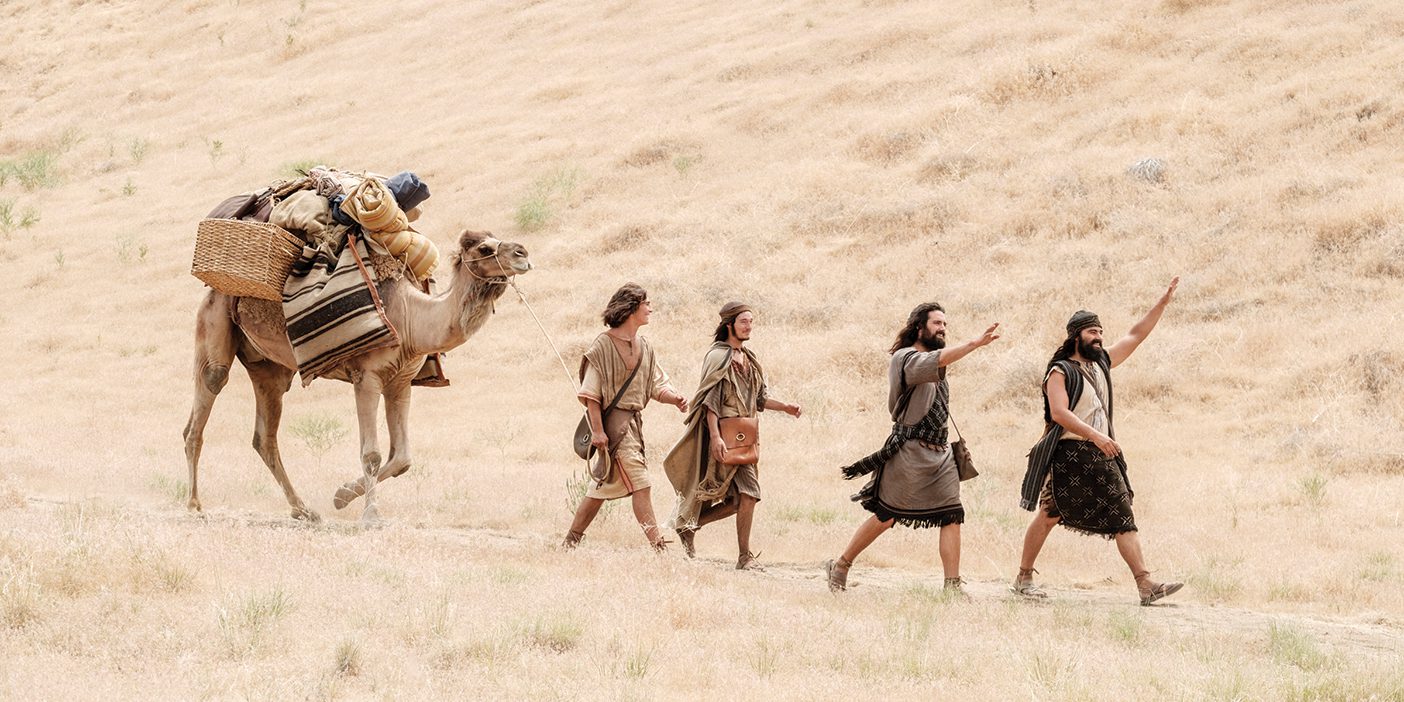
It’s not hard to find a BYU student milling about the streets of Jerusalem or wandering along the path to the Tree of Life in the long-awaited Book of Mormon Videos, the series released weekly online by The Church of Jesus Christ of Latter-day Saints since September. More than 100 BYU students and alumni helped pull off the project, including Rick Macy (BA ’82), who plays Lehi, and Cooper G. Sutton (BA ’18), who plays Sam. One of the most important roles, however, took place behind the scenes.
Enter a scriptural team featuring some current and former professors of ancient scripture like Clyde J. Williams (BS ’74, MEd ’78, EdD ’89), D. Kelly Ogden (MEd ’74), Dennis L. Largey (MA ’76, EdD ’81), and Tyler J. Griffin, who met regularly with the producers and directors to pore over the stories, each meeting “like an in-depth Book of Mormon class,” says Williams. Their goal: to provide reasonable details where the record is silent, like what animals Lehi’s family would be hunting along the borders of the Red Sea, what 6th-century B.C. customs would have been used for the burial of Lehi, and how scenes should include Nephi’s sisters, who are mentioned only in 2 Ne. 5:6?
“Their goal: to provide reasonable details where the record is silent.”
The team endeavored to stay true to the Book of Mormon, follow the Spirit, and avoid excessive speculation. Below are a few questions they wrestled with to turn the Book of Mormon into film:
How do you bring hardly mentioned characters to life?
The Book of Mormon was written not from an intimate perspective, but from the perspective of prophets and their interactions and teachings to their people, says Williams. “We don’t generally hear a whole lot about a prophet’s intimate family,” he points out. That said, to bring stories to screen, the producers had to cast characters who aren’t in the limelight. “We know the women played an important role. We just don’t always have the details.” Yet in 1 Ne. 7, when Nephi is tied up by his brothers, the scriptures tell us that Ishmael’s wife and daughters stepped forward to help Nephi. “It’s a great place to portray what really happened,” says Williams, “where women are actively involved.”
What kind of animals would have accompanied the Lehites on their eight-year journey through the wilderness?
The team, working with Hollywood performance-animal trainer and Church member Brandice Brown, drew from the scriptures, experts, and even Egyptian art to include five camels, Dorper and Katahdin sheep (which have a ragged look), Nubian goats (typically found in the Middle East), and horses with an Arabian or Spanish Barb appearance.
Where should the “rod of iron” be located?
Based on 1 Ne. 8:19, the filmmakers placed it between the path and river—but just feet away from the river. “Because many were being drowned in the river, one of the rod’s purposes was to keep people from falling into the river, which represented the ‘depths of hell’ (1 Ne. 12:16,),” says Williams.
We know Laman and Lemuel murmured, but what did they say?
The writing team gathered all the scriptural accounts of when the brothers spoke to consider their frame of mind and syntax. Their goal: to make each person as real as possible. For example, in chapter 16 when Nephi breaks his bow, the writing team came up with lines like “The Lord has led us here to perish” and “We don’t need the Lord; we need food” to illustrate Laman and Lemuel’s murmuring.











